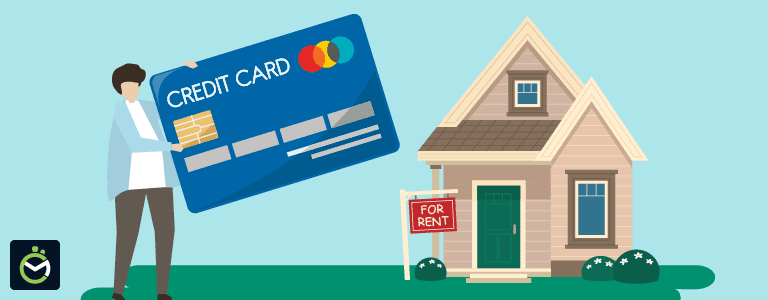Paying rent with a credit card might sound like a convenient shortcut, especially when monthly bills pile up. For many tenants, the idea of using credit to handle housing costs can provide short-term relief, reward points, or even perks like promotional offers. However, there are important finance fee, and long-term implications to consider before choosing this method.
Credit card basics dictate that not all landlords or property management companies accept direct credit card payments.
Some may require tenants to go through payment methods like a third-party app, electronic transfer services, or specialized rent payment platforms. Others may only accept a paper check, bank account transfer, or money market withdrawal. Understanding your lease agreement, your rights, and your landlord’s policies will help you decide whether paying rent this way is worth it.
Quick Summary
This article explores the pros and cons of paying rent with a credit card. It covers potential benefits like earning rewards, improving credit scores, and offering flexibility for tenant. It also highlights the common credit cards accepted, payment processing services, and the steps involved in making rent payments via credit.
Fees, interest rates, and cash advance risks are examined in detail. The article also discusses how to choose the right payment method, the impact on credit scores, and alternatives such as bank transfers and paper checks. Practical financial tips are included for managing credit card rent payments effectively.
Benefits of Paying Rent with a Credit Card
Earn Rewards and Points
Many credit cards offer points, rewards, or even cashback on transactions, including rent payments. If your card’s interest rates are manageable, and you pay off the balance in full each month, these perks can make the arrangement beneficial.
High-value promotions or sign-up bonuses can be especially appealing for tenants making large transactions like rent.
Build Credit History
On-time rent payments made through a credit card can positively impact credit scores, especially if your lender or credit bureaus recognize these payments as part of your credit history. This is particularly useful for tenants looking to improve their financial standing or prepare for future investment opportunities.
Flexibility in Budgeting
A credit card can provide short-term flexibility by allowing you to delay the impact of the rent payment until your next paycheck or deposit clears. This breathing room can help during months when unexpected expenses, such as car insurance or utility bills, strain your budget.
Common Credit Cards Accepted for Rent Payment
Standard Credit Options
Visa, Mastercard, and American Express are the most commonly accepted cards through payment services. Some banks also offer credit cards linked directly to checking accounts, enabling smoother transfers.
Specialized Credit Cards
Some cards are tailored for small business owners, partners in shared housing, or tenants who frequently travel and want to consolidate housing and travel expenses for added rewards. These cards often include additional perks such as insurance coverage or advertiser disclosure for partner offers.
Payment Processing Services
Payment processing services act as the middlemen between tenants and landlords who do not directly accept credit cards. Popular apps and platforms handle the transaction, charging your credit card and then sending a deposit or paper check to your landlord.
These services usually provide transaction tracking, convenience, and options for tenants who want to automate monthly bills. However, they often come with processing fees, sometimes a flat rate, sometimes a percentage of the rent amount.
Fees Associated with Credit Card Payments
Using a credit card for rent payments is rarely free. Fees can range from 2% to 3% of the payment, which can add up quickly. While some tenants may see value in the rewards earned, others might find that the cost outweighs the benefits.
There may also be additional costs if you use a cash advance option, which often comes with higher interest rates, immediate interest accrual, and separate transaction fees. Always check your credit card’s terms and conditions to avoid unexpected charges.
Steps to Pay Rent with a Credit Card
-
Check Your Lease Agreement – Confirm that your landlord or property manager allows credit card payments and understand the payment methods accepted.
-
Select a Payment Platform – Choose between direct landlord processing, third-party apps, or services linked to your bank account.
-
Understand the Fees – Review all costs before committing to the method.
-
Schedule Payments – Use a secure app or banking service to automate monthly rent payments to avoid late fees.
-
Track Transactions – Keep a record of all transactions for your own protection and in case of any disputes.
Choosing the Right Payment Method
When evaluating payment methods, compare interest rates, fees, rewards, and flexibility. For example, using a secure banking transfer might cost less than a credit card transaction, but you lose out on points or rewards.
Meanwhile, credit cards can help with cash flow but require disciplined repayment to avoid debt.
Impact on Credit Score
Timely rent payments can positively influence credit scores if reported to credit bureaus. However, missed or late payments will have the opposite effect, especially if they cause a high utilization ratio.
Keep your balance in check and avoid over-reliance on credit to maintain a healthy financial profile.
Alternatives to Credit Card Payments
-
Bank Transfers – Direct transfers from checking accounts.
-
Paper Checks – Traditional but still widely accepted.
-
Money Market Withdrawals – Useful for tenants with investment-linked accounts.
-
Electronic Transfers – Secure online transactions via banking apps.
-
Cashier’s Checks – For landlords who require certified payments.
Tips for Managing Finances When Using a Credit Card
-
Pay your bill in full each month to avoid interest charges.
-
Track your spending through apps or budget tools.
-
Avoid using the cash advance feature unless absolutely necessary.
-
Take advantage of promotions but be aware of advertiser disclosure notes and fine print.
-
Monitor your balance closely to prevent overextension.





